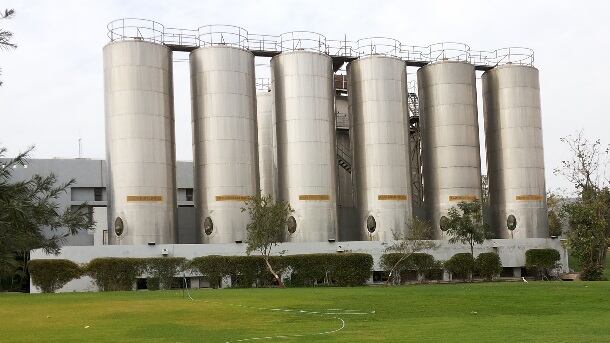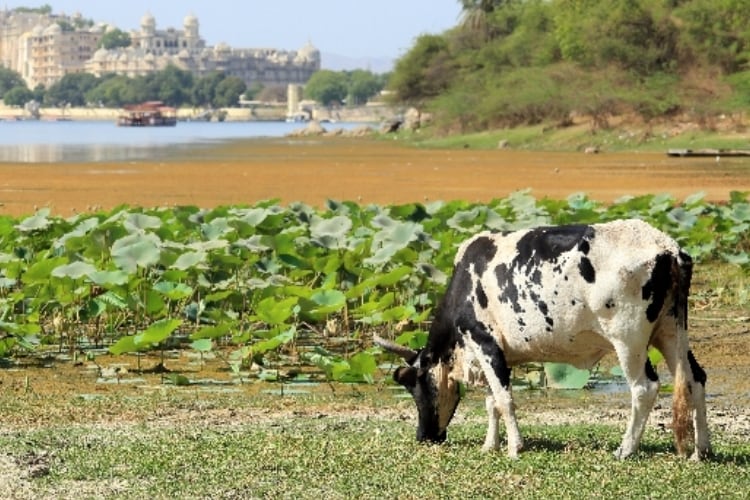Last year Amul, or the brand name of the Gujarat Co-operative Milk Marketing Federation (GCMMF), to use its more catchy name, placed in the top 10 of international dairy companies compiled by the International Farm Comparison Network, which lists the size of dairy processors each year.
Today, GCMMF, which markets the ubiquitous Amul brand of milk and dairy products, also appears to be the fastest growing of all dairy organizations.
Yet despite its scale, few people outside India know very much about the giant co-op.
It began life when a small group of farmers from two Gujarati villages formed the Kaira District Co-operative Milk Producers' Union in 1946. At first, it produced around just 250 liters of milk a day.
Transforming India
Its fortunes turned under the stewardship of Verghese Kurien, a figure who became known as India's milkman. In 1970, he launched Operation Flood, the world’s biggest ever agricultural industry development program, which transformed dairy into India's biggest self-sustaining industry and its largest rural employment provider, accounting for a third of all rural income.
The program transformed India from being a milk-deficient nation into the world's largest milk producer. It also doubled the milk available per person while increasing output four-fold in 30 years.
Today, GCMMF has a catchment across some 18,700 villages and has 18 member unions.
Now a top-10 dairy processor, Amul has come a long way since just 2011, when it was ranked in eighteenth place in the Farm Comparison Network list of top global dairy organizations.
This has been the fastest rise by any top-ranking dairy company. Many of these are multinationals that operate in multiple countries, whereas Amul operates almost exclusively in India.
“Our milk procurement has increased from 9.1m liters per day 10 years ago to 21m liters last year, which shows a phenomenal increase of 131%,” said Ramsinh Parmar, Amul’s chairman, who attributes this growth to the high procurement prices the cooperative pays its members for their milk.
“These have increased by 111% during this period. This highly remunerative price has helped us retain the farmers’ interest in milk production.”
Income quadruples
Over the last eight years, GCMMF farmers’ incomes have quadrupled, Parmar claims. These improving returns have served to motivate milk producers to invest more in increasing milk production.
Integrating technology into India’s notoriously old-fashioned dairy production system has also played a part in Amul’s rise, according to Jethabhai Bharwad, Parmar’s number two.
“Our digitalization drive has brought in complete transparency in payment to milk producers. They are aware of the exact amount due to them and the rationale behind the rate,” he said.
“Payments going directly into their bank accounts also helps inculcate the savings habit in them. The need for an active bank account has brought a large number of the Amul family farmer households directly into the formal banking network. This helps to further enhance transparency among producer members using digital technology.”
The company now plans to achieve annual turnover of INR500bn (US$7.2bn) by 2021 from a current level of INR410bn. This will bring further cheer to the farmers, to whom an estimated 80-85% of consumers is passed back.
“Since India is the biggest milk producing nation in the world, and Amul has been the germination point of the milk cooperative movement in India, GCMMF will one day fulfill its destiny of becoming the biggest dairy organization in the entire world, and become the center of gravity for global dairy industry,” said managing director RS Sodhi, when announcing the Amul’s ambitions.
“We will achieve this milestone because of the strong value system created by our founder chairman, the late Dr Kurien, and the selfless and visionary leadership of the late Tribhuvandas Patel,” Sodhi added, referring to one of the founders of the Kaira District Co-operative Milk Producers' Union.
Growing with juice
Sodhi will hope that some of the new revenues will come from a new direction he intends to take the Amul brand, after it recently launched the Amul Tru range of fruit juices.
Having seen the growth of the juice category, which is rocketing on the back of growing health awareness across India, and taking swathes of market share from the sugary carbonated drinks segment, Amul decided to add milk solids to the juices to help it stand out in a crowded market dominated by Dabur’s Real, Coca-Cola’s Minute Maid and Pepsico’s Tropicana brands.
Its move into the juice market follows an expansion into the frozen snacks market, after last year launching products from French fries and aloo tikki to hash browns under its Happy Treats brand. The rationale was to move into non-seasonal markets during cooler times of the year when ice cream production drops. Amul’s enormous pan-India distribution network has helped it hit the ground running.
The brand also intends to strengthen its chocolates business, which, though low-key to many, still accounts for 3% of GCMMF’s turnover. A new plant on the outskirts of Anand, Amul’s headquarters, was inaugurated last September with the capacity to produce 1,000 tonnes of chocolate a month. Sodhi believes that Amul has already become the number one player in the dark chocolates business, which it first entered 40 years ago.
Expanding dairy
On the dairy front, which remains its main focus, Amul sees room to expand, even though it already accounts for a quarter of the Indian market. To this end, GCMMF intends to invest INR6-8bn annually over the coming years in new processing and packaging facilities. The cooperative currently has 69 plants, with five more in the pipeline.
In addition, Amul’s member unions plan to increase milk processing capacity from the current 35m liters a day to 38-40m liters in the next two years. In south India, a market that is dominated by strong regional players, GCMMF is looking to improve its distribution reach further.
Credit ratings agency Crisil predicts India’s dairy sector will be worth INR75tr (US$1.1bn) by 2021 and anticipates organized dairies will spend some INR140bn over three years to increase processing capacity by 25-30% and strengthen their milk procurement infrastructure.
Yet consistent double-digit production growth in Amul’s home market has led to fierce competition among local and multinational businesses tempted to cash in. This was evidenced earlier this year, when French dairy giant Lactalis made its third Indian acquisition in January, when it bought the milk products business of Prabhat Dairy for around INR17bn. Lactalis now has 11 factories in India and it collects 2.3m liters of milk a day.
Meanwhile, New Zealand’s Fonterra has formed a joint-venture with retail entrepreneur Kishore Biyani’s Future Consumer to produce a range of dairy products. The first batch will be launched later this year.
Amul’s managing director sees this competition as an opportunity, just as long as GCMMF’s members continue to provide labor in line with growth. He told one newspaper, “In the next 10 years, dairy can provide a source of livelihood for 120m people in rural India.
“There is already a huge market, but we need to produce more and we need people to produce it.”


